具体描述
内容简介
罗根泽先生的代表作《中国文学批评史》,是中国现代学术史上三部文学批评史经典之一,与其他两部——郭绍虞《中国文学批评史》、朱东润《中国文学批评史大纲》——鼎足而立,各具特色。本书所述上自先秦,下讫两宋,盖分周秦、两汉、魏晋六朝、隋唐、晚唐五代、两宋六篇,以材料丰富、体例完善为其突出特色。作者以诗话文评为山铜,以文集笔记为沙金,搜罗大量资料,进行整理分析,所得结论持之有效,言之成理。作者独创"综合体",按古代文学理论在各阶段所表现的特点,分为几大阶段。再把每一阶段所出现的各种文学批评现象适当分类;或以文学论点为中心,或以文体演变为中心,或以文学流派为中心,分别叙述。由此纲举目张,巨细无遗。本书将中国还给中国,一时代还给一时代,由此将本国的材料跟外来的意念打成一片,方能处处抓住要领,详细探索,从而取得了不同凡响的成就。
作者简介
罗根泽(1900-1960), 字雨亭,直隶深县(今河北深州市)人,著名古典文学研究专家。1927年同时考取北京大学国学所和清华大学国学院,1929年同时于两处毕业。先后曾在天津女子师范学院、保定河北大学、中国大学、安徽大学、北京师范大学、西北联合大学、中央大学等处任教,建国后在南京大学执教,同时任中国社科院文学研究所兼职研究员。曾主编《古史辨》第四六册,著有《中国文学批评史》《乐府文学史》和《中国古典文学论集》等。
目录
中国文学批评史(上)
第一篇 周秦文学批评史
第一章 绪言
一 文学界说
二 文学批评界说
三 文学与文学批评
四 文学史与文学批评史
五 中国文学批评的特点
六 文学批评与时代意识
七 文学批评与文学批评家
八 文学批评与文学体类
九 史家的责任
十 历史的隐藏
十一 材料的搜求
十二 选叙的标准
十三 解释的方法
十四 编著的体例
第二章 诗说
一 诗人的意见
二 古诗的编辑
三 春秋士大夫的赋诗
四 孔子的诗说
五 孟子所谓“以意逆志”与“知人论世”
六 荀子所谓“诗言志”
七 墨子的用诗
八 诗与乐
第三章 “文”与“文学”
一 古经中的辞令论
二 最广义的文学
三 孔子及孔门诸子所谓“文”与“文学”及“文章”
四 孟子所谓“养气”与“知言”
五 荀子的立言论准
六 《易传》对于文学的点点滴滴
七 墨子的“三表法”及其重质的文学观
八 晚出谈辨墨家的论辩文方法
九 老子的反对“美言”与提倡“正言若反”
十 庄子书中的艺术创造论、写作方法论及书文糟粕论
十一 韩非的反对文学及《解老》篇的重质轻文
第二篇 两汉文学批评史
第一章 诗的崇高与汩没
第二章 “文”与“文章”及其批评
第三章 对于辞赋及辞赋作家的评论
第四章 王充的文学批评
第三篇 魏晋六朝文学批评史
第一章 文学概念
第二章 文笔之辩
第三章 文体类
第四章 音律说(上)
第五章 音律说(下)
第六章 创作伦
第七章 鉴赏论
第八章 论文专家之刘勰
第九章 论诗专家之锺嵘
第十章 北朝的文学伦
第十一章 佛经翻译伦
第四篇 隋唐文学批评史
第一章 诗的对偶及作法(上)
第二章 诗的对偶及作法(下)
第三章 诗与社会及政治
第四章 元稹白居易的社会诗论
第五章 史学家的文论及史传文的批评
第六章 早期的古文论
第七章 韩柳及以后的古文论
中国文学批评史(下)
第五篇 晚唐五代文学批评史
第一章 文学论
一 自唐代社会变迁说起
二 李商隐的反道缘情文学说
三 杜牧的事功文学说
四 皮日休陆龟蒙的隐逸文学说
五 刘蜕罗隐的文章丧亡论
六 韩偓欧阳炯的香艳说
七 韦庄韦縠的清丽说
八 黄滔吴融等的反艳丽说
九 刘晌徐铉的折中说
第二章诗格(上)
一 诗格的两个时代
二 五代试士的注重诗格及赋格
三 材料的获得
四 王睿《炙毂子诗格》
五 李洪宣《缘情手鉴诗格》
六 齐己《风骚旨格》
七 虚中《流类手鉴》
八 徐衍《风骚要式》
九 徐寅《雅道机要》
十 王玄《诗中旨格》
十一 王梦简《诗要格律》
十二 桂林淳大师《诗评》
十三 文或《诗格》
十四 保暹《处囊诀》
第三章 诗格(下)
一 旧题魏文帝《诗格》
二 旧题贾岛《二南密旨》
三 旧题白居易《金针诗格》及梅尧臣《续金针诗格》
四 旧题白居易《文苑诗格》
五 旧题梅尧臣《梅氏诗评》
六 惠洪《天厨禁脔》及林越《少陵诗格》
七 已佚的诗格书
八 诗格总集——李淑《诗苑类格》
九 诗格丛书——蔡传《吟窗杂录》
十赋格及文格
十一 反诗格的言论
第四章 诗句图
一 诗句图的渊源
二 李商隐《梁词人丽句》
三 张为《诗人主客图》
四 李洞《集贾岛诗句图》
……
第五章 《诗品》及《本事诗》
第六篇 两宋文学批评史
序
第一章 宋初的诗文复古革新论
第二章 宋初对李杜韩柳集的甄理与鼓吹
第三章 欧阳修的复古革新意见
第四章 二程及其他道学派的道文分合说
第五章 王安石及其他经术派的政教文学说
第六章 苏轼及其他议论派的述意达辞说
第七章 江西派的诗文方法
第八章 浙东派的事功文学说
第九章 理学派的诗文道流说
第十章 心学派的诗文心发说
第十一章 诗话、词话、文话、诗文评点
附录 两宋诗话辑校叙录
罗根泽先生学术年表
罗根泽《中国文学批评史》的方法、体例与文学观念
精彩书摘
《中华现代学术名著丛书:中国文学批评史(套装上下册)》:
《汉书·公孙弘卜式兄宽传赞》云:“汉之得人,于兹为胜;儒雅则公孙弘、董仲舒、兄宽,……文章则司马迁、相如。……孝宣承统,纂修洪业,亦讲论六艺,招选茂异,萧望之、梁丘贺、夏侯胜、韦玄成、严彭祖、尹更始以儒术进;刘向、王褒以文章显。”《后汉书·班彪传》载彪上言选置东官及诸王国官属云:“及至中宗,亦令刘向、王褒、萧望之、周堪之徒,以文章儒术,保训东官。”班固《两都赋序》亦云:“至于武宣之世,乃崇礼官,考文章。”又云:“故言语侍从之臣,若司马相如、虞丘寿王、东方朔、枚皋、王褒、刘向之属,朝夕论思,日月献纳;而公卿大臣,御史大夫倪宽、太常孔臧、大中大夫董仲舒、宗正刘德、太子太傅萧望之等,时时间作。或以抒下情而通讽谕,或以宣上德而尽忠孝,雍容揄扬,著于后嗣,抑亦雅颂之亚也。故孝成之世,论而录之,盖奏御者千有余篇,而后大汉之文章,炳焉与三代同风。”崔瑗《河间相张平子碑》亦云:“道德漫流,文章云浮。”至《后汉书·文苑传》里,“文章”一字,更举不胜举。固然作者范晔为刘宋时人,而所称论者则皆是东汉之文人与其作品。总观上述所谓“文章”,形式方面是“训辞深厚”,内容方面是“或以抒下情而通讽谕,或以宣上德而尽忠孝”,已略同于后世所谓“文章式”的“文学”了。
至于广义的文章,就是指一切表现于外的文彩而言的文章,在汉人的著作中也时常见到。如陆贾《新语·资质》篇云:“夫楩楠豫章……在高柔软,入地坚强,无膏泽而光润生,不克画而文章成。”《淮南子·原道训》云:“是故圣人之治也,掩其聪明,灭其文章。”《白虎通义·天地》篇云“道德生文章”之类,皆是。但以与文学无关,与文学批评更无关,故兹从略。
……
《中国文学批评史》这部巨著,以其宏大的视野和严谨的学风,系统地梳理了中国文学批评思想的发生、发展与演变脉络,是理解中国文学传统及其内在精神的必读之作。该书并非简单罗列历代文学评论家的观点,而是深入挖掘其思想根源、时代背景和社会文化语境,力图揭示中国文学批评思想的独特性和生命力。 上册:奠基与发展——从先秦诸子到宋元之际 上册聚焦于中国文学批评思想的早期奠基与初步发展。其开篇即追溯至先秦时期,探讨了诸子百家中蕴含的早期美学观念和批评萌芽。诸子学说虽非直接的文学批评,但其中关于“道”、“言”、“意”、“象”的哲学思辨,为后来的文学批评提供了重要的哲学基础。例如,老子“道可道,非常道”的虚静观,道出了艺术的超越性;孔子“诗三百,一言以蔽之,曰思无邪”的道德评价标准,则确立了文学的教化功能;庄子“以意逆志”的理解方法,开启了文学接受的深度解读。 进入汉代,随着文学体裁的成熟和文人心态的变化,文学批评逐渐显露出独立意识。司马迁《报任安书》中“亦欲以究天人之际,通古今之变,成一家之言”的创作理念,不仅是史家自我定位的宣言,也包含了对文学价值的深刻思考。班固《两都赋序》中对赋的艺术特征和文采的强调,标志着对文学形式美感的初步认识。魏晋南北朝时期,是中国文学批评史上的一个重要转折点。曹丕《典论·论文》是我国文学批评史上的第一部专著,其“盖文章,经国之大业,不朽之盛事”的论断,提升了文学的地位,而“文以气为主”、“盖有越其等夷, Explaining the Chinese Literary Criticism History (Boxed Set, Volumes 1 & 2) This monumental work, Chinese Literary Criticism History, with its grand perspective and rigorous scholarship, systematically traces the genesis, development, and evolution of Chinese literary criticism thought. It is an essential read for understanding the Chinese literary tradition and its intrinsic spirit. Rather than simply enumerating the views of critics from various dynasties, this book delves deeply into the ideological roots, historical context, and socio-cultural milieu, striving to reveal the uniqueness and vitality of Chinese literary criticism. Volume 1: Foundations and Development – From the Pre-Qin Philosophers to the Song and Yuan Dynasties The first volume focuses on the early foundations and initial development of Chinese literary criticism. It begins by tracing back to the Pre-Qin period, exploring the early aesthetic concepts and critical seeds embedded within the Hundred Schools of Thought. Although these philosophical discourses were not direct literary criticism, their philosophical speculations on "Dao," "words," "meaning," and "imagery" provided crucial philosophical underpinnings for later literary criticism. For instance, Lao Tzu's concept of the ineffable "Dao" ("The Dao that can be spoken is not the eternal Dao") points to the transcendental nature of art; Confucius's moral evaluation standard ("The Odes can be summarized in one word: without deviation") established the didactic function of literature; and Chuang Tzu's method of understanding by "imagining the intent" ("yi yi ni zhi") initiated a deeper level of literary interpretation. During the Han Dynasty, with the maturation of literary genres and changes in the mindset of literati, literary criticism gradually began to exhibit independent consciousness. Sima Qian's aspiration in his Letter to Ren An – "I also wish to investigate the connections between Heaven and humanity, understand the changes from ancient to modern times, and establish a school of my own" – was not only a declaration of his identity as a historian but also encompassed profound reflections on the value of literature. Ban Gu's Preface to the Two Capitals Rhapsodies, with its emphasis on the artistic characteristics and literary embellishments of the rhapsody, marked an initial recognition of the aesthetic appreciation of literary form. The Wei, Jin, Southern and Northern Dynasties period represented a significant turning point in the history of Chinese literary criticism. Cao Pi's Discourse on Literature from his A Discourse on Literature (Dian Lun) is considered the first monograph on literary criticism in China. His assertion that "literature is a great undertaking of the state and an immortal glorious deed" elevated the status of literature, while his emphasis on "literature is primarily about spirit" ("wen yi qi wei zhu") and his recognition that "there are those who transcend their peers" ushered in a new era of critical thought. The aesthetic theories of the Seven Sages of the Bamboo Grove, particularly their emphasis on naturalness, spontaneity, and emotional expression, profoundly influenced subsequent literary creation and criticism, advocating for the pursuit of genuine feelings and the critique of artificiality. The Tang Dynasty witnessed the flourishing of poetry and prose, leading to a rich and diverse landscape of literary criticism. The emergence of influential critics like Liu Zongyuan and Han Yu championed the "ancient prose movement" (guwen yundong), advocating for a return to the clarity, conciseness, and moral substance of ancient writing, and advocating for literature to serve as a vehicle for conveying moral principles and social responsibilities. Their critiques of the ornate and superficial "parallel prose" (pianwen) of the preceding era laid the groundwork for a more substantive and purposeful approach to literary expression. Meanwhile, the aesthetic critiques of poets like Li Bai and Du Fu, though often embedded in their own creative works, provided invaluable insights into the ideals of poetic expression. The discussions surrounding "poetic imagery" (shijing) and "poetic conception" (shiqing) began to take shape, exploring the interplay between external scenes and internal emotions. The Song Dynasty further refined and systematized literary criticism. The emphasis shifted towards exploring the deeper meanings within literary works and the author's intentions. Ouyang Xiu championed a balanced approach, appreciating both content and form. Su Shi, a towering figure, introduced the concept of "spontaneous naturalness" (ziyuan) and advocated for a more expansive and uninhibited style, emphasizing the importance of "interest" (quwei) and "skill" (gongfu). His theories on artistic creation and appreciation, rooted in his understanding of the natural world and human emotions, had a profound and lasting impact. The debates between Neo-Confucian scholars and literary critics also became prominent, reflecting the complex interplay between moral philosophy and aesthetic judgment. Critics began to engage with the nuances of literary language, exploring the power of imagery, rhythm, and structure. The Yuan Dynasty, while characterized by political upheaval, did not see a decline in literary critical activity. The rise of drama and the novel prompted new critical considerations. Critics began to analyze the dramatic structure, character development, and thematic concerns of these popular forms, adapting existing critical frameworks to new literary manifestations. The emphasis on clarity, plausibility, and emotional resonance in dramatic criticism laid the groundwork for later explorations of narrative arts. Volume 2: Diversification and Modernization – From the Ming and Qing Dynasties to the 20th Century Volume 2 charts the diversification and gradual modernization of Chinese literary criticism from the Ming and Qing dynasties into the 20th century, a period marked by profound social and intellectual transformations. The Ming and Qing dynasties witnessed a continuous development of critical thought, with a growing emphasis on literary analysis and aesthetic exploration. The rise of scholar-officials and the proliferation of printed materials facilitated the dissemination of critical ideas. Critics like Li Zhi championed individuality and freedom of expression, challenging traditional orthodoxies. The emergence of "late-blooming" critics and the rise of diverse schools of thought, such as the "Eight Great Prose Masters of the Tang and Song" (Tang Song Ba Da Jia) and the "Eight Great Prose Masters of the Ming" (Ming Ba Da Jia), fostered a rich tradition of literary commentary and debate. Critiques of vernacular fiction and drama became more sophisticated, with scholars analyzing plot, characterization, and thematic depth. The focus on "psychological portrayal" (xinyu) and the exploration of human emotions began to gain prominence. The late Qing dynasty and the early Republic of China period represent a crucial juncture where Chinese literary criticism began to engage with Western ideas and engage in a process of modernization. The influx of Western literary theories and critical methodologies, such as realism, naturalism, formalism, and aestheticism, challenged traditional Chinese critical paradigms. Intellectuals like Hu Shi advocated for a new literary revolution, urging the adoption of vernacular Chinese in literature and a critical re-evaluation of the classical tradition. This period saw vibrant debates on the purpose of literature, the role of the writer, and the nature of literary beauty. Critics grappled with how to integrate Western critical frameworks with Chinese literary traditions, leading to a dynamic synthesis and a broadening of critical horizons. The 20th century witnessed the further professionalization and specialization of literary criticism. Under the influence of Marxist thought and various Western literary theories, critics explored new avenues of analysis, focusing on social class, ideology, historical materialism, and semiotics. The "cultural revolution" period, while imposing certain ideological constraints, also produced unique critical discourse. Post-Mao era criticism saw a resurgence of diverse theoretical approaches, including structuralism, post-structuralism, feminism, and postcolonialism, leading to a highly complex and multifaceted critical landscape. Scholars engaged in in-depth analyses of canonical works, re-examined marginalized literary traditions, and explored the relationship between literature, culture, and society in a globalized world. Throughout both volumes, the emphasis is on the dynamic evolution of critical thought, reflecting the changing intellectual currents, social structures, and cultural values of China. The work meticulously examines the theoretical foundations, analytical methodologies, and thematic concerns of Chinese literary criticism, offering a comprehensive and insightful guide for scholars, students, and anyone interested in the rich and enduring legacy of Chinese literature. It is a testament to the enduring power of critical inquiry and its indispensable role in shaping and understanding literary traditions.
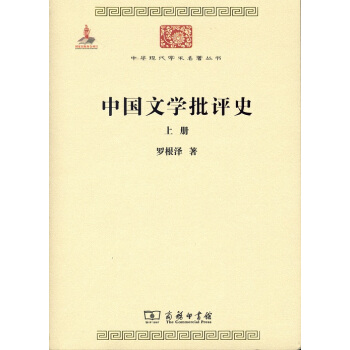


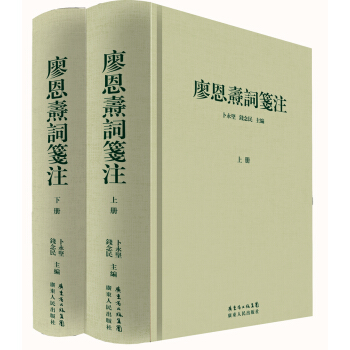
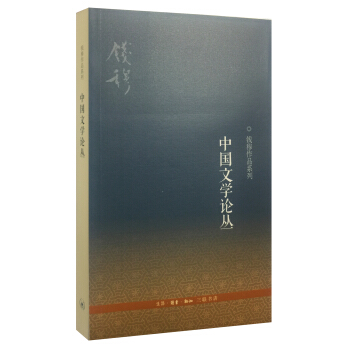
![我爱阅读丛书:不会说不的老鼠 [3-6岁] pdf epub mobi 电子书 下载](https://pic.windowsfront.com/11960540/576a46b8N9bd12816.jpg)


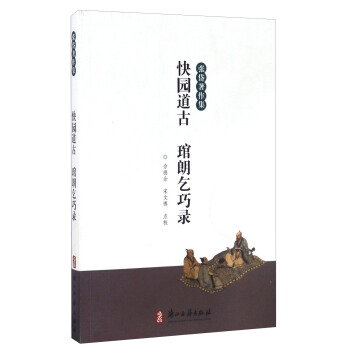
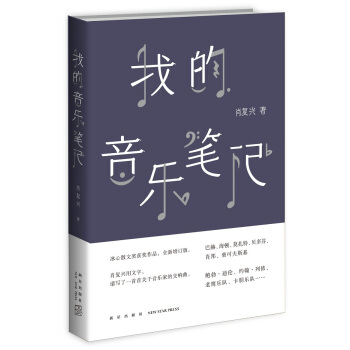

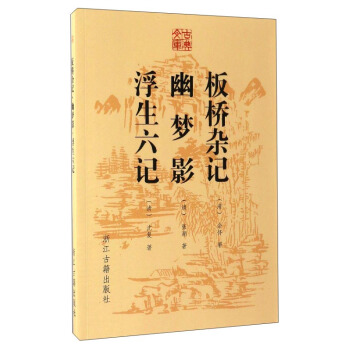
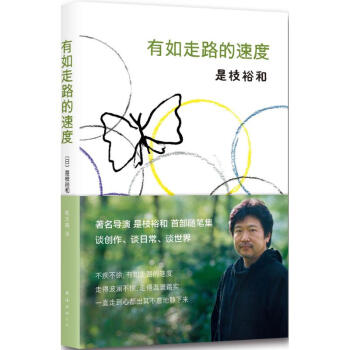
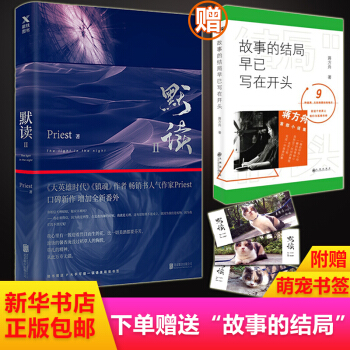

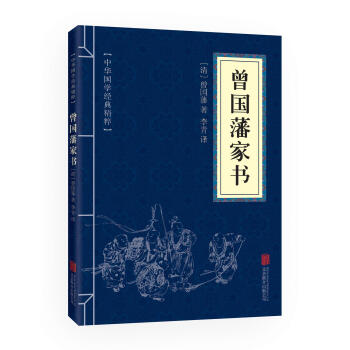
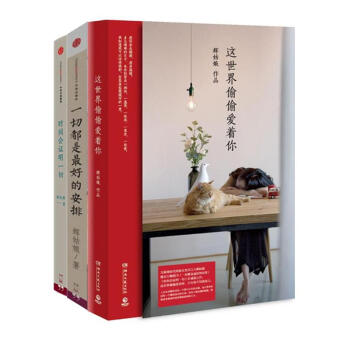



![青少年阅读欣赏丛书:中国散文名篇赏析 [11-14岁] pdf epub mobi 电子书 下载](https://pic.windowsfront.com/11400949/rBEhVFMKoJUIAAAAAAKvdTleMj8AAI9LgM0tXAAAq-N855.jpg)
![曹文轩典藏拼音版:白胡子 [7-10岁] pdf epub mobi 电子书 下载](https://pic.windowsfront.com/11475319/59293b43Ne0ae5d69.jpg)
![世界少年文学精选·名家导读本:木偶奇遇记 [11-14岁] pdf epub mobi 电子书 下载](https://pic.windowsfront.com/11485496/53a7a556N3614cd35.jpg)